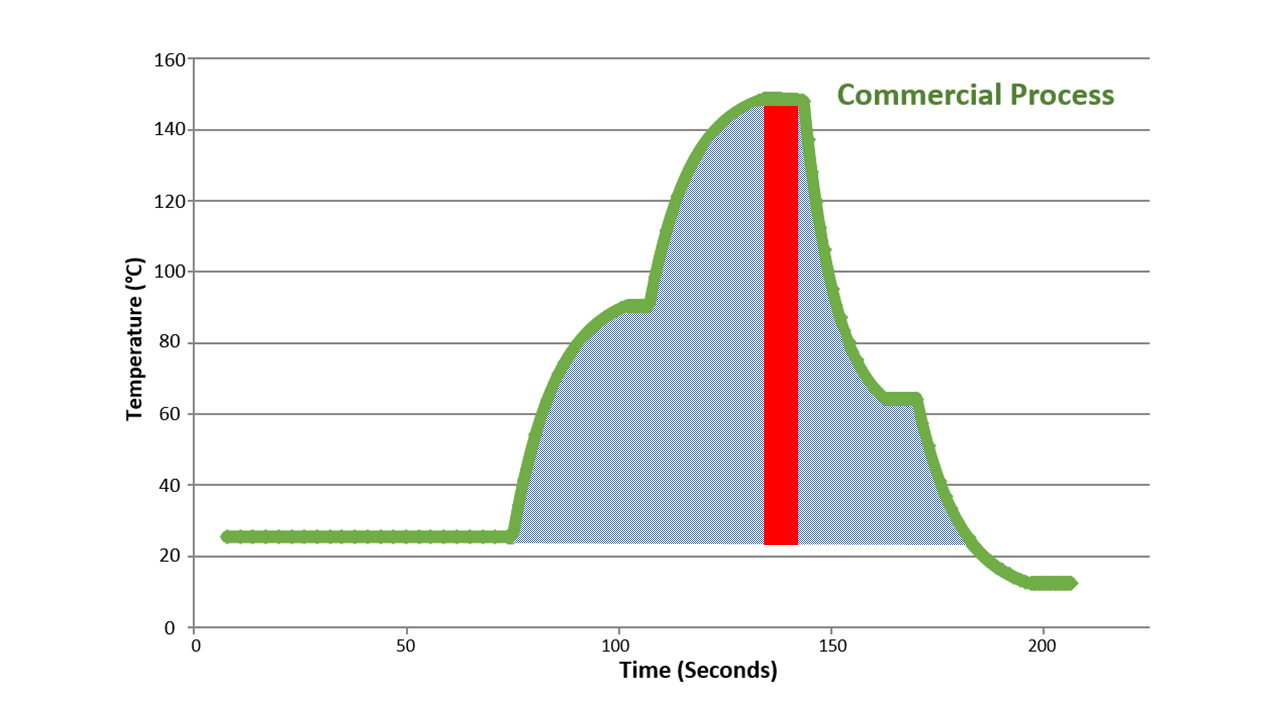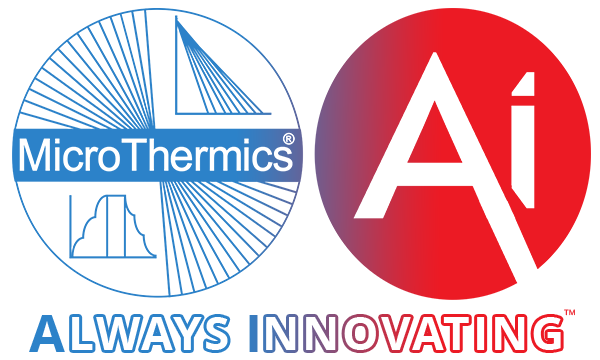Scale Up / Scale Down
Fluid products, like juices, plant-based or dairy-based drinks, smoothies, and other products, must be pasteurized or aseptically processed (sterilized) by Sterile Filling Equipment before being sold.
These processes will likely change your product. They can affect its color, flavor, viscosity, texture, and other qualities. Some changes are good, but many are bad. Because of this, you need to make sure the process in the lab accurately simulates the production process.
In other words, the lab process must be an accurately “scaled down” version of your production process to ensure your product formulas will “scale up” to production.

Below is an example of a Time/Temperature History graph for a low-acid aseptic process (sterilization). It shows the thermal exposure of a product over time as it flows through the commercial pasteurizer or sterilizer.

The entire colored area under the curve represents the product’s exposure to heat. This fuels the reactions that determine your products:
- Color
- Viscosity
- Scent
- Flavor
- Texture
- Nutrient Content
The area highlighted in red represents the Hold Tube. The Hold Tube is considered the “kill step.” The thermal exposure in the hold tube ensures that there has been a sufficient reduction of bacteria to either pasteurize or aseptically process (sterilize) the product. This is a vital component to simulate in the lab for food safety, but it is only one part of a much larger process.
However, the hold tube is what most companies and engineers focus on when discussing scale-up (and scale-down). But, as you can see, it represents only one part of the overall process that determines your products’ qualities (flavor, color, viscosity, texture, etc.). Products made on Sterilizing Lab Equipment or pilot equipment that doesn’t simulate the entire process will not represent how it will come out of a production plant.
MicroThermics specializes in thermal process simulation—scaling processes up and down! We take into account the WHOLE process. We use a variety of methods to ensure the process you do in the lab matches production, including:
- Time/Temperature Histories
- Empirical testing (we have a lab to run your products to compare to your commercial products)
- Proprietary mathematical proprietary comparison methods
- More than 30 years of experience!
If your process in the lab is not truly accurate to the process in the production plant, then the results you get in the lab won’t translate (or scale) to the plant. This slows down your R&D and makes it much more expensive.
Let us show you how to streamline your R&D and processing while reducing your costs!
- Watch our webinar on scale-up in our Thermal Process Academy!
- Call us to help with your processing issues!
- Call us about laboratory HTST/UHT & Aseptic Processing equipment and services!
